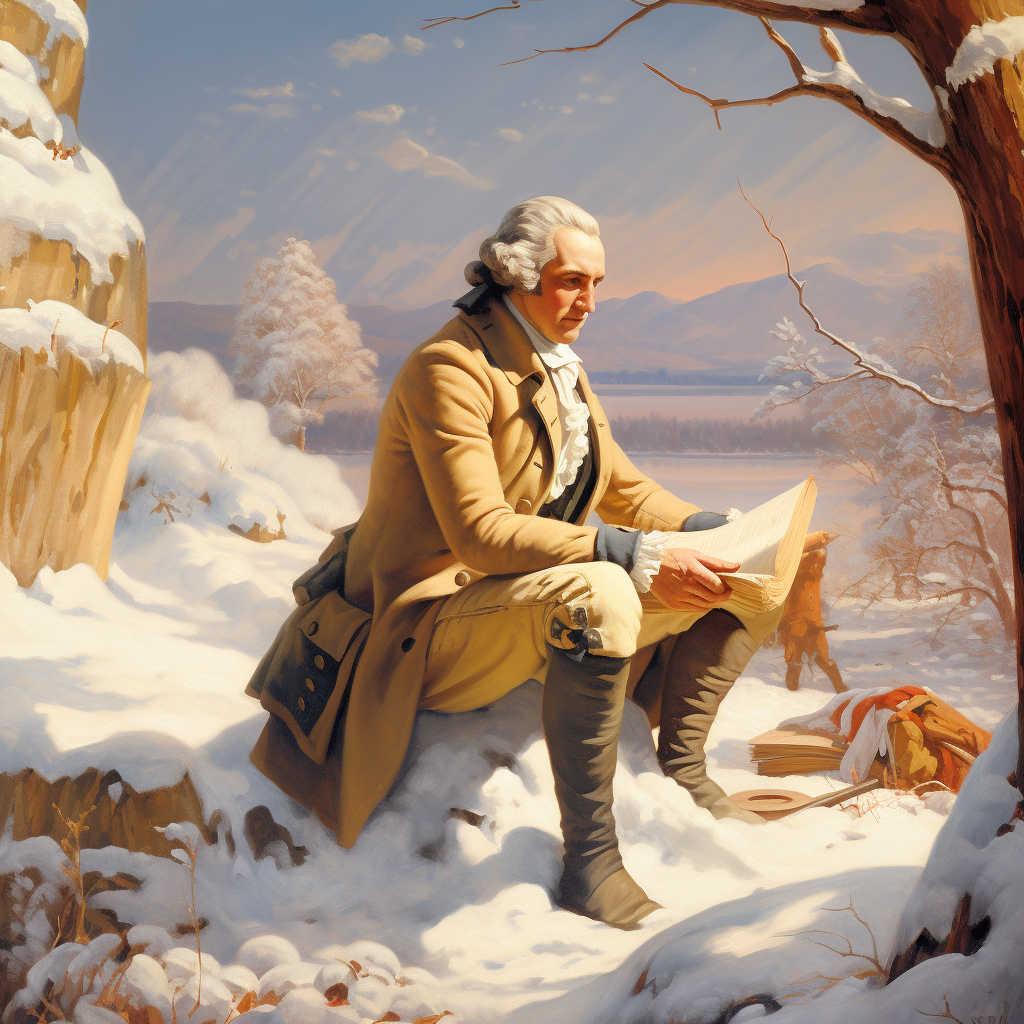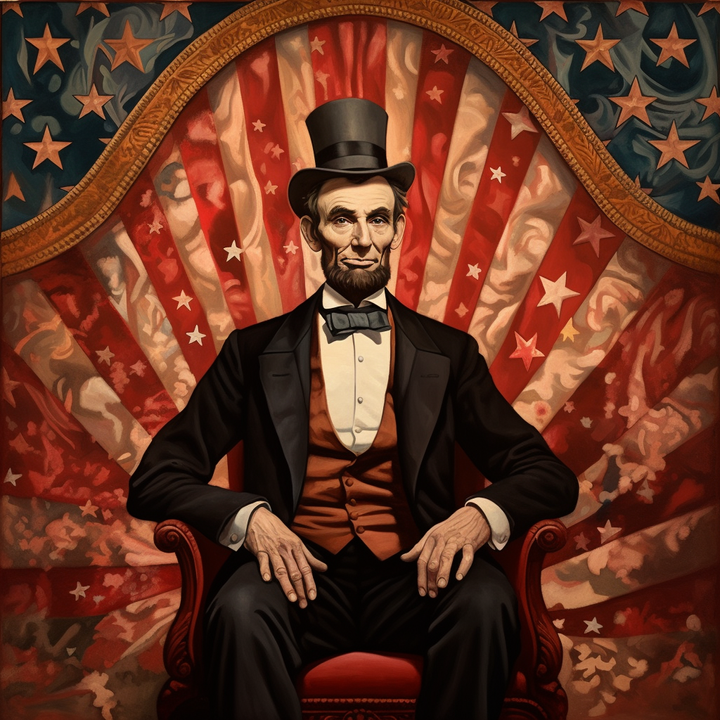George Washington and Winter at Valley Forge

The winter encampment at Valley Forge is often remembered as a time of great hardship and testing for the Continental Army and its leader, George Washington. During this challenging period, Washington's perseverance and moral leadership played a pivotal role in maintaining the army's cohesion and morale, providing a lasting lesson in leading through adversity.
Factual Details of The Winter at Valley Forge
Year: 1777-1778
Location: Valley Forge, Pennsylvania, USA
Event: Continental Army's Winter Encampment
The winter of 1777-1778 at Valley Forge was one of the most trying periods for the Continental Army. Faced with severe cold, food shortages, and inadequate shelter, the troops were on the brink of despair.
Despite these dire conditions, George Washington remained with his men, sharing in their hardships. His presence, commitment to improving conditions, and unwavering resolve not only kept the army intact but also strengthened their determination and fighting spirit.
Key Outcomes:
- The army emerged from Valley Forge more unified and disciplined.
- Washington's leadership during this time solidified his reputation as a dedicated and empathetic leader.
- The experience at Valley Forge became a symbol of endurance and resilience in the face of adversity.
Leadership Lessons from Washington’s Time at Valley Forge
Perseverance in the Face of Hardship:
- Washington's experience at Valley Forge exemplifies the importance of perseverance when confronted with severe challenges.
Empathetic and Moral Leadership:
- His decision to share in the hardships of his troops demonstrated a deep level of empathy and moral responsibility, which helped to maintain morale and loyalty.
Fostering Unity and Strength in Adversity:
- The hardships endured under Washington's leadership served to unify and strengthen the army, showcasing how adversity can be a unifying and strengthening force.
Leading by Example:
- Washington's personal example of endurance and resilience served as a powerful motivator for his troops, underlining the impact of leading by example.
Adaptation and Improvement:
- Despite the harsh conditions, Washington focused on improving the situation, highlighting the need for adaptability and proactive problem-solving in leadership.
How Today's Leaders Can Use This Lesson
Adapting to Today’s Context:
Contemporary leaders can draw inspiration from Washington's leadership at Valley Forge:
- Embrace perseverance as a key trait in navigating organizational challenges and setbacks.
- Practice empathetic leadership by understanding and sharing in the experiences and challenges of team members.
- Use difficult times to foster unity and build a stronger, more cohesive team.
- Lead by example, demonstrating the values and behaviors you wish to see in your organization.
- Focus on adaptive solutions and continuous improvement, even in challenging circumstances.
Concluding Thoughts
George Washington's leadership during the winter at Valley Forge stands as a testament to the power of perseverance, moral leadership, and the ability to unify and strengthen a team in the face of adversity. His example provides enduring lessons for leaders facing challenges in any era.
Your Reflection
Reflect on Washington’s leadership during this challenging time and consider:
- How can you demonstrate perseverance and resilience in your leadership role?
- In what ways can you foster a sense of unity and shared purpose within your team during difficult periods?
- How can empathetic leadership positively impact team morale and loyalty?
- What strategies can you employ to adapt and improve in response to challenges?



